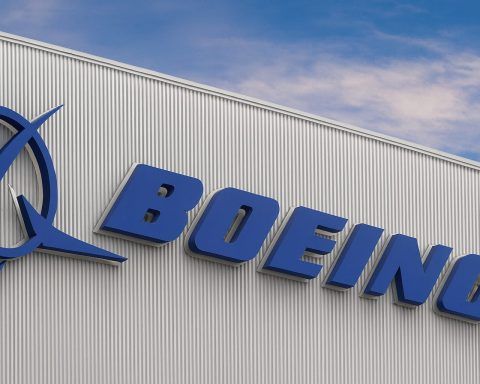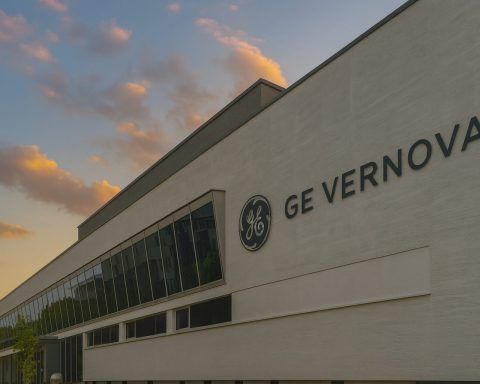- NASA announced TRACERS, a pair of satellites to study Earth’s magnetosphere, slated to launch in late July 2025 on a SpaceX Falcon 9 from California, flying in tandem across the poles to observe magnetic reconnection, alongside three NASA tech demos including a “Polylingual” communications terminal and a smallsat radiation belt cleanup demonstrator.
- NASA announced SNIFS, the Solar Eruption Integral Field Spectrograph, to be carried by a sounding rocket from White Sands, New Mexico, with a July 18 launch window to study the Sun’s chromosphere and solar eruptions.
- NASA’s Crew-11 mission features four astronauts—Mike Fincke, Zena Cardman, Kimiya Yui, and Oleg Platonov—who began quarantine on July 17 for a planned July 31 SpaceX Crew Dragon launch to the ISS.
- On July 18 a Falcon 9 from Vandenberg Space Force Base delivered 24 Starlink satellites as part of Starlink 17-3, bringing SpaceX’s in-orbit constellation to about 7,900 satellites, with booster B1082 completing its 14th landing on the “Of Course I Still Love You” droneship and marking SpaceX’s 477th rocket landing.
- SpaceX disclosed plans to launch more than 400 additional Starlink satellites into polar orbits by the end of 2025 to boost high-latitude coverage, potentially requiring around 16 more 24-satellite launches.
- Amazon’s Project Kuiper made its first SpaceX flight on July 15 with 24 Kuiper satellites launched on a Falcon 9 from Cape Canaveral, deployed into a 465 km orbit and later raised to 630 km, on booster B1096, marking the third Kuiper launch and bringing the fleet to 78 satellites in orbit toward a 3,236-satellite goal.
- China’s Tianzhou-9 cargo spacecraft launched on July 14 from Wenchang, docking with the Tiangong space station to deliver 7.2 tons of supplies and two Feitian spacesuits, plus a new core muscle exercise device; the mission marks China’s ninth resupply flight since 2017.
- The European Union is pursuing a Space Act, announced around July 15, to give regulators broad enforcement powers over satellite operators, including on-site facility inspections and steep fines to enforce safety, cybersecurity, and debris-mitigation rules.
- The NASA–ISRO NISAR Earth-observation satellite has arrived at India’s Satish Dhawan Space Centre and is slated for launch by the end of July 2025 on a GSLV Mk II, featuring a dual-frequency L-band and S-band radar to monitor land and ice changes.
- A coronal hole on the Sun caused high-speed solar wind of roughly 730–789 km/s and active geomagnetic conditions around July 17, 2025 (Kp around 4), producing aurora displays at high latitudes before subsiding to quieter levels by July 18.
Space fans, strap in! In a whirlwind 48 hours, the global space sector saw rocket launches, mission unveilings, policy shake-ups, and even aurora alerts. Here’s your comprehensive roundup of all major satellite and space developments from July 17 and 18, 2025 – spanning NASA’s latest science missions, SpaceX’s breakneck launch pace, China’s space station deliveries, industry mega-deals, and more.
NASA Unveils New Missions and Preps Next Crew Launch
- Magnetospheric Mission Briefing: On July 17, NASA held a media teleconference to preview TRACERS, a pair of satellites that will study Earth’s magnetic shield (magnetosphere) and its explosive interactions with the solar wind [1] [2]. Slated to launch in late July on a SpaceX Falcon 9 from California, TRACERS will fly in tandem through Earth’s poles to capture how magnetic reconnection funnels solar particles into our atmosphere [3]. The mission shares its ride with three NASA tech demos, including a “Polylingual” communications terminal and a smallsat testing radiation belt cleanup methods [4].
- Sun-Studying Rocket Launch: NASA also announced the imminent launch of SNIFS (Solar Eruption Integral Field Spectrograph), a cutting-edge solar observatory. A sounding rocket will carry SNIFS to space from White Sands, NM, with the launch window opening Friday, July 18 [5]. SNIFS will probe the Sun’s chromosphere – the turbulent layer driving solar flares and space weather. “There’s still a lot of unknowns,” said Dr. Phillip Chamberlin, the mission’s principal investigator, highlighting the need to better understand how energy moves through the chromosphere [6] [7]. Insights from SNIFS could improve models for solar eruptions that threaten satellites and power grids [8] [9].
- Crew-11 on Deck for ISS: NASA’s next astronaut crew to the ISS is in final prep. The four-member Crew-11 team (NASA’s Mike Fincke and Zena Cardman, JAXA’s Kimiya Yui, and Roscosmos cosmonaut Oleg Platonov) entered routine quarantine on July 17 ahead of their upcoming SpaceX Crew Dragon launch [10] [11]. This health-stabilization period at Johnson Space Center is one of the last milestones before traveling to Kennedy Space Center for a planned July 31 liftoff to the International Space Station [12] [13]. During training, Crew-11 rehearsed launch and docking procedures in SpaceX simulators and even practiced pad emergency escapes, as NASA and SpaceX gear up for the 11th operational crew rotation mission [14].
SpaceX’s Launch Frenzy: Starlink Expansion and Amazon’s Kuiper Debut
- Back-to-Back Falcon 9 Launches: SpaceX continued its rapid cadence with multiple launches this week. Late on July 18, a Falcon 9 from Vandenberg Space Force Base lofted 24 Starlink internet satellites into a polar orbit, a rare sunset liftoff on the West Coast [15]. The mission (Starlink 17-3) brings SpaceX’s constellation to nearly 7,900 satellites in orbit [16]. Veteran booster B1082 nailed its 14th landing on the Of Course I Still Love You droneship, marking the company’s 477th rocket landing to date [17]. This was SpaceX’s second Starlink batch from California in a week, as another Falcon 9 from Vandenberg had delivered 26 Starlinks on July 15 [18].
- Polar Coverage Push: SpaceX is deliberately populating polar orbits to improve coverage in high-latitude regions like Alaska. “We plan to launch more than 400 additional satellites to the polar inclination by the end of 2025 alone, which will more than double the capacity for Alaskan customers,” the company announced [19]. The first of these polar Starlinks are already boosting user download speeds in Alaska [20]. This shift means many upcoming West Coast launches will focus on high-inclination Starlink deployments. SpaceX’s internal stats suggest it may require ~16 more launches of 24-satellite sets to meet its polar expansion goal [21].
- Amazon’s Kuiper Constellation Takes Flight: In a landmark team-up between rival tech titans, Amazon launched its Project Kuiper satellites on a SpaceX Falcon 9 for the first time. In the predawn of July 15, a Falcon 9 blasted off from Cape Canaveral carrying 24 Kuiper broadband satellites on the “KF-1” mission [22]. The booster (B1096) was new and successfully landed on the A Shortfall of Gravitas drone ship ~8½ minutes later [23]. By 56 minutes post-launch, all 24 satellites were deployed into a 465 km orbit, to be raised to their 630 km operational orbits by Amazon’s team [24] [25]. This marks Amazon’s third Kuiper launch – the first two flew on ULA’s Atlas V rockets earlier – bringing 78 satellites on orbit toward its planned 3,236-satellite megaconstellation [26]. Notably, Amazon’s choice to use SpaceX came after initial reluctance; the company had originally excluded SpaceX from its launch contracts, but a December 2023 deal added Falcon 9 launches to keep Kuiper on schedule [27] [28]. With regulatory deadlines looming (Amazon must deploy half the constellation by mid-2026), the successful KF-1 mission is a major step forward [29] [30]. Amazon now plans two more Kuiper launches with SpaceX in the near future to continue rapidly populating its network.
- (Bonus) Commercial Milestone: On July 12 (just before our 48-hour window), SpaceX also launched a Falcon 9 from Florida carrying an Israeli communications satellite to geosynchronous transfer orbit [31]. This flurry of launches underscores SpaceX’s record-breaking pace – by mid-2025, Elon Musk’s company has conducted 40+ missions this year, outpacing any competitor and demonstrating unprecedented reusable rocket turnaround.
Blue Origin’s Big Moves: New Glenn, Moon Lander Progress
- New Glenn’s Second Flight Secured: Blue Origin grabbed headlines by confirming that NASA’s ESCAPADE Mars mission will fly on New Glenn’s next launch. In a social media post on July 17, Blue Origin announced the twin Mars orbiters – officially the Escape and Plasma Acceleration and Dynamics Explorers – will be the primary payload on New Glenn’s second flight (NG-2) [32]. This mission was originally slated for New Glenn’s debut launch but got bumped; now it’s set to go later this year on the heavy-lift rocket’s follow-up outing [33]. (Blue Origin’s massive New Glenn rocket had a successful maiden launch in January 2025, and the company is carefully testing its first and second stages before NG-2 [34].) Securing ESCAPADE gives New Glenn a high-profile NASA science haul, delivering two small spacecraft to Mars to study the planet’s magnetosphere. It also signals Blue Origin’s entry into interplanetary launch services, lining up with founder Jeff Bezos’s ambitions to compete in the deep-space arena.
- Building for the Moon and Beyond: Down at Florida’s Space Coast, Blue Origin’s construction boom continues. Recent aerial imagery shows rapid progress at the company’s Exploration Park campus near Kennedy Space Center [35]. In just weeks, Blue Origin erected the steel framework for a new Metal Forming Facility, expanding its manufacturing base [36]. Meanwhile, the nearly completed “Lunar Plant One” building will be dedicated to assembling Blue Origin’s Blue Moon lunar landers [37] [38]. In late June, the first prototype core of the MK1 Blue Moon lander arrived in Florida, and the facility is gearing up to produce the landers that will carry astronauts to the Moon as part of NASA’s Artemis program [39]. Blue Origin is also preparing Launch Complex 36 for New Glenn’s next launch: test tanks, propellant lines, and other pad upgrades are being installed to support the larger Block 2 New Glenn booster and upcoming lunar lander tests [40] [41]. All told, Blue Origin’s recent activities paint a picture of a company “breaking new ground” – expanding factories, readying its second New Glenn, and accelerating work on human-rated lunar landers.
- Suborbital Flights Resume: In human spaceflight news, Blue Origin quietly achieved a milestone in late June. The company launched its 13th crewed New Shepard suborbital flight on June 29 from West Texas, carrying six civilian passengers (including a married couple) to the edge of space [42]. This was New Shepard’s first crewed flight of 2025, indicating a return to service after a brief hiatus. While not in the July 17–18 window, the successful flight underscores Blue Origin’s parallel focus on space tourism even as New Glenn and lunar projects ramp up.
International Highlights: China Resupply Mission & Europe’s Plans
- Tianzhou 9 Delivers Record Cargo: China’s space station received a major shipment just days earlier, impacting news by July 17. The Tianzhou-9 cargo craft launched on July 14 (Wenchang Spaceport) and docked with the Tiangong station, bringing 7.2 tons of supplies for the three Shenzhou-20 taikonauts [43] [44]. Among the haul were fuel, research gear, and two brand-new Feitian spacesuits for spacewalks [45]. These upgraded suits boast longer lifespans – “extended operational lifespan, from three years or 15 spacewalks previously to four years or 20 spacewalks,” according to Chinese state media [46]. They also delivered a new core muscle exercise device to upgrade Tiangong’s orbital gym, helping the crew stay fit in microgravity [47]. The fresh suits and equipment are timely: on July 20, two astronauts donned the Feitian suits for an 8-hour EVA, installing a debris shield on Tiangong’s exterior (an ongoing effort to fortify the station) – a clear demonstration of the new suits’ capabilities. Tianzhou-9 is China’s ninth resupply mission since 2017, underscoring a robust cadence of station logistics as Tiangong approaches full operational status [48].
- ESA Welcomes Austrian Chancellor: In Europe, space diplomacy was on display. Christian Stocker, Austria’s Federal Chancellor, visited ESA’s Paris headquarters on July 18, marking his first trip to an ESA facility since taking office [49]. ESA Director General Josef Aschbacher led a tour showcasing how Austria’s contributions further sustainable development and scientific excellence in ESA programs [50]. Austria, an ESA member since 1986, has lately broadened its space involvement from Earth observation into launchers and exploration [51]. Notably, Austrian astronaut Carmen Possnig – part of ESA’s astronaut reserve – joined the visit, fielding questions for Austrian media [52]. The high-profile visit underlines Europe’s emphasis on cooperative space growth among its member states.
- Europe Getting Serious on Space Regulation: The European Union is advancing a bold “Space Act” to tighten oversight of the space industry [53]. According to reports on July 15, draft plans would grant regulators unprecedented enforcement powers over both domestic and foreign satellite operators in Europe [54]. This includes authority to conduct on-site inspections of satellite facilities and impose steep fines to uphold standards of safety, cybersecurity, and orbital sustainability [55]. The move comes as Europe faces a boom in satellite activity (think megaconstellations and increasing space traffic) and wants to prevent collisions and radio interference. If implemented, the EU Space Act would introduce some of the world’s toughest space safety and debris-mitigation regulations, complementing ESA’s existing efforts on space debris. It signals that Europe is treating space as critical infrastructure – requiring rules of the road to keep orbits safe and secure.
- ISRO–NASA NISAR Nears Launch: Meanwhile, a major U.S.-India collaboration is on the horizon. The NISAR Earth observation satellite, jointly developed by NASA and ISRO, has arrived at India’s Satish Dhawan Space Centre and is slated for launch by the end of July 2025 [56]. NASA announced a July 21 media briefing to preview this first-of-its-kind dual-frequency radar mission, which will track Earth’s land and ice changes in unprecedented detail [57]. NISAR’s looming launch (on an Indian GSLV Mk II rocket) underscores the growing international partnerships in space – in this case marrying NASA’s L-band radar with ISRO’s S-band radar on a single observatory. As of July 17–18, final checks were underway, and excitement was building on two continents for NISAR’s role in studying climate impacts like ice loss, earthquakes, and ecosystem changes.
Space Policy & Business: New Leaders, Mergers, and Military Priorities
- NASA Leadership Change: A shake-up at NASA’s helm became official in July. Former U.S. Transportation Secretary Sean O’Keefe Duffy was named Acting NASA Administrator by President Trump, effective July 10 [58]. By July 17, Duffy was “just getting started” in the role, emphasizing continuity for Artemis lunar plans and support for commercial space partnerships (according to insiders). Duffy fills the gap left by Administrator Bill Nelson’s departure, and NASA stakeholders will be watching how his political experience translates to space agency leadership. (Notably, Duffy’s appointment keeps NASA under the guidance of a Trump cabinet ally, reflecting the administration’s intent to maintain momentum on flagship programs like the Moon-Mars exploration campaign.)
- Pentagon Prioritizes Launchpads: With commercial launch activity surging, the U.S. Space Force issued new range usage guidelines on July 17 to protect national security access. The Space Force, which manages America’s primary launch ranges, said when capacity crunches arise at Cape Canaveral or Vandenberg, military and intelligence missions will get first dibs on launch windows and infrastructure [59]. This policy tries to balance supporting the booming commercial sector with the Space Force’s duty to ensure critical defense satellites can launch on schedule. The guidelines come as SpaceX, ULA, Blue Origin and others vie for pad slots, and as new launch vehicles (like Vulcan, New Glenn, and many small launchers) enter service. By formalizing a “national security first” principle [60], the Space Force aims to avert conflicts and clarify expectations as launch cadence reaches record levels. (It’s a sign of the times when having too many rockets is the problem!)
- Satellite Giants Merge: A seismic consolidation in the satellite industry closed on July 17. Luxembourg-based SES announced it has completed its acquisition of Intelsat, a U.S. satellite operator, in a multibillion-dollar deal [61] [62]. The merger creates a new powerhouse in geostationary communications: by combining fleets, the unified SES–Intelsat boasts an unparalleled array of GEO satellites covering virtually the entire globe [63]. SES, known for its medium-Earth orbit O3b network as well, is now poised to rapidly expand its MEO constellation with the resources of Intelsat at hand [64] [65]. Executives say the merger will accelerate innovations in satellite broadband, 5G backhaul, and inflight connectivity as the company targets new markets. This deal also reflects competitive pressure from SpaceX’s Starlink and Amazon’s Kuiper; by joining forces, SES and Intelsat seek the scale to invest in next-gen systems. Industry analysts call it the largest satellite-operator merger in years, reshaping the landscape of commercial space communications.
- Space Diplomacy and Law: In Washington, lawmakers signaled support for space programs despite budget debates. A House bill advanced on July 17 rejects broad NASA funding cuts, instead protecting science and exploration budgets (while trimming some lunar Human Landing System funds) [66]. And on the international stage, discussions intensified about norms of behavior in space: the U.N. is preparing a fall summit on orbital debris rules, building on momentum from recent anti-satellite test moratoria. Taken together with Europe’s Space Act initiative, it’s clear that space policy was a hot topic this week, as governments race to keep regulations in step with the fast-evolving space environment.
Space Weather Watch: Auroras Dance Under Coronal Winds
Even space weather made news during this period. A gaping coronal hole on the Sun’s southern hemisphere sent high-speed solar wind streaming toward Earth, producing gorgeous auroral displays at high latitudes earlier in the week [67]. By Thursday, July 17, geomagnetic conditions reached “active” levels (peaking around Kp 4 on the 0–9 index) as the Earth’s magnetic field grappled with the rapid solar wind (which topped ~730–789 km/s) [68] [69]. Space weather forecasters had warned of a minor G1-class geomagnetic storm risk that night [70], and indeed skywatchers in far-northern locales (Scotland, Canada, Alaska, etc.) caught brief sightings of the Northern Lights dancing low on the horizon [71].
However, by July 18 the auroral oval was calming. The UK Met Office and NOAA’s Space Weather Prediction Center noted that the solar wind stream was gradually weakening, and geomagnetic activity was subsiding to quieter levels [72]. The Kp index was forecast to stay around 2–3 through the weekend, meaning only a slim chance of auroras visible outside extreme polar latitudes [73] [74]. No major solar flares or Earth-directed CMEs occurred during these two days – only low-level C-class flares were recorded [75] – so space weather impacts were mild.
For now, satellite operators and power grid managers can breathe easy, but the episode was a vivid reminder of our Sun’s capricious influence. Another large coronal hole is rotating into view and could boost geomagnetic activity again in the coming days [76]. Agencies advised keeping an eye out for updated aurora forecasts if you live in upper latitudes – the next bout of cosmic fireworks might be just around the corner!
Sources: Official NASA press releases and blogs [77] [78] [79]; Space.com and NASA Science updates [80] [81]; Spaceflight Now launch reports [82] [83]; SpaceX statements [84]; SpaceNews coverage [85] [86]; ESA news and imagery [87]; Chinese media via Space.com [88]; Space.com Aurora live blog [89] [90]; EarthSky solar activity report [91]; SpaceNews policy and military space updates [92] [93]; and NOAA/UK Met Office space weather alerts [94].
References
1. www.nasa.gov, 2. www.nasa.gov, 3. www.nasa.gov, 4. www.nasa.gov, 5. science.nasa.gov, 6. science.nasa.gov, 7. science.nasa.gov, 8. science.nasa.gov, 9. science.nasa.gov, 10. www.nasa.gov, 11. www.nasa.gov, 12. www.nasa.gov, 13. www.nasa.gov, 14. www.nasa.gov, 15. spaceflightnow.com, 16. spaceflightnow.com, 17. spaceflightnow.com, 18. spaceflightnow.com, 19. spaceflightnow.com, 20. spaceflightnow.com, 21. spaceflightnow.com, 22. spaceflightnow.com, 23. spaceflightnow.com, 24. spaceflightnow.com, 25. spaceflightnow.com, 26. spaceflightnow.com, 27. spaceflightnow.com, 28. spaceflightnow.com, 29. spaceflightnow.com, 30. spaceflightnow.com, 31. spaceflightnow.com, 32. aiaa.org, 33. aiaa.org, 34. www.nasaspaceflight.com, 35. www.nasaspaceflight.com, 36. www.nasaspaceflight.com, 37. www.nasaspaceflight.com, 38. www.nasaspaceflight.com, 39. www.nasaspaceflight.com, 40. www.nasaspaceflight.com, 41. www.nasaspaceflight.com, 42. abcnews.go.com, 43. www.space.com, 44. www.space.com, 45. www.space.com, 46. www.space.com, 47. www.space.com, 48. www.space.com, 49. www.esa.int, 50. www.esa.int, 51. www.esa.int, 52. www.esa.int, 53. spacenews.com, 54. spacenews.com, 55. spacenews.com, 56. www.nasa.gov, 57. www.nasa.gov, 58. spacenews.com, 59. spacenews.com, 60. spacenews.com, 61. spacenews.com, 62. spacenews.com, 63. spacenews.com, 64. spacenews.com, 65. spacenews.com, 66. spacenews.com, 67. earthsky.org, 68. www.space.com, 69. www.space.com, 70. www.space.com, 71. www.space.com, 72. www.space.com, 73. www.space.com, 74. www.space.com, 75. earthsky.org, 76. earthsky.org, 77. www.nasa.gov, 78. science.nasa.gov, 79. www.nasa.gov, 80. science.nasa.gov, 81. www.nasa.gov, 82. spaceflightnow.com, 83. spaceflightnow.com, 84. spaceflightnow.com, 85. aiaa.org, 86. spacenews.com, 87. www.esa.int, 88. www.space.com, 89. www.space.com, 90. www.space.com, 91. earthsky.org, 92. spacenews.com, 93. spacenews.com, 94. www.space.com









